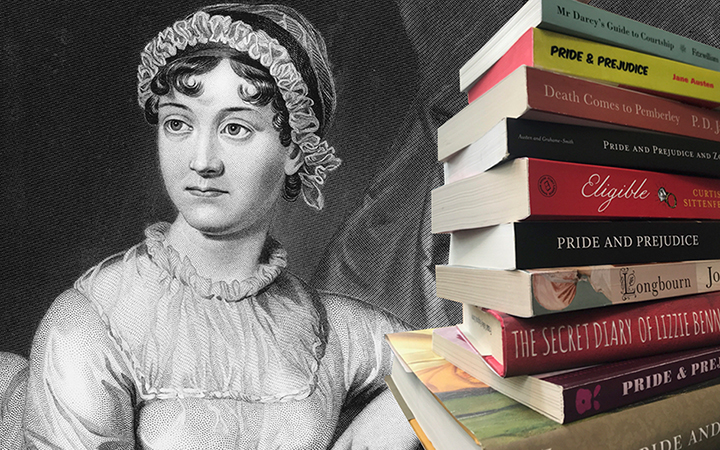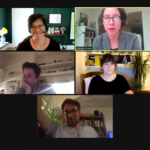Yale student presents a virtual exhibit on Jane Austen’s ‘Pride and Prejudice’
As the University’s safety regulations still pose a challenge to in-person events, one student presents her online exhibit on the publishing history of Austen’s classic novel.

Courtesy of Sarah Davis
An exhibition called “Publication & Prejudice” comparing more than 20 versions of Jane Austen’s “Pride and Prejudice” from Yale’s collections is currently on view virtually. Through the online exhibit, curator Emma Brodey ’21 aims to create a way for audiences to explore how the physicality of a book influences their reading experience.
“Publication & Prejudice,” which was first publicized last spring, traces the journey of the book’s publication from its first edition to the most recent one available in Yale’s collections. Brodey created the exhibition as part of the Student Research at Yale University Library exhibit project — an initiative that provides one rising senior with curatorial training and culminates in a student-produced library exhibition using materials from the Yale Library collections.
“This exhibit brings together two things I find absolutely fascinating: Austen studies and the history of the book,” Brodey said. “Joining those two interests made the process wonderfully fun for me, but I also hope it will have a benefit for anyone who looks at the exhibit. It is a way to stress the importance of materiality in a modern world and to show how publishing adjustments can change the reading experience.”
Brodey conceived of this idea in a seminar she took during her sophomore year, “Art of the Printed Word,” taught by Richard Rose, a printer at the Yale School of Art. In an essay assignment, she compared the 1832 Philadelphia publication of “Pride and Prejudice” with the 2010 Belknap-Harvard annotated edition. Over the next year and a half, Brodey continued to reflect on how publishers treat and present the same text in different ways. Eventually, it became the leading theme of her exhibit.
Nancy Kuhl, curator of poetry in the Yale Collection of American Literature at the Beinecke Rare Book & Manuscript Library, advised the project. Kuhl brainstormed with Brodey about how she could use the collection’s objects to illustrate her ideas and arguments in a compelling way.
“Working online required changing some of our work processes but the payoff is the opportunity to share [Brodey’s] excellent exhibition with a large online audience that might never visit New Haven to see it in person,” Kuhl said. “Besides, her detailed research and thorough knowledge made our work easy.”
The exhibit was originally supposed to take place in person, but the pandemic brought a change of plans. From March 2020 to April 2021, Library Exhibits Technician Sarah Davis and Library Exhibitions Program Manager Kerri Sancomb co-managed the exhibit’s online planning. Davis also designed the website hosting the exhibition.
Davis noted that shifting to Zoom at the beginning of the pandemic was initially unfamiliar for all members. But this spurred “creative thinking and planning,” allowing the team to adapt specific tasks and activities successfully into the virtual experience, Davis said.
For example, the Case Layout and Item Review is usually a day-long meeting during which the curator lays out all selected items. The curators converted this into a virtual session where photos of items were arranged in to-scale case outlines via a Microsoft Publisher document.
According to Brodey, the online format impeded the process, since she was unable to observe the physicality of her chosen books in person — including aspects such as the “wear and tear,” notes in margins or students’ annotations. Instead, Brodey relied on digital scans, which felt “ironic” in light of her project’s focus on materiality. Nevertheless, Kuhl said she was deeply impressed with Brodey’s ability to adapt her thinking to meet the challenges of this new situation.
Another related challenge was to analyze the sheer quantity of material available in the University libraries.
“The goal of the exhibit was not to be comprehensive — it is impossible because there’s just so much material in the collections,” Brodey said. “It was more to pull out some of the salient examples of ‘Pride and Prejudice’ editions at Yale that show something interesting and unique about the way that Austen has been represented physically.”
Still, there were advantages to the virtual format. Davis noted that while physical exhibitions have a finite amount of display time, an online setup does not need to have a set end time. The format also allowed curators to both add supplemental information with links to related materials and improve accessibility with text voice overs, screen magnifiers and closed captioning on videos.
“I hope that viewers will be inspired to think about how Austen’s novels and all the other books we read are changed by the physical ways we interact with them,” Brodey said. “That’s what I find most exciting about the exhibit: this idea that books don’t just live on their own in some abstract world of great literature. They’re constantly evolving, and the way we understand them can be completely altered without changing a single word of the text.”
Digital collections of the Beinecke Rare Book & Manuscript Library are free and open to the public online.









